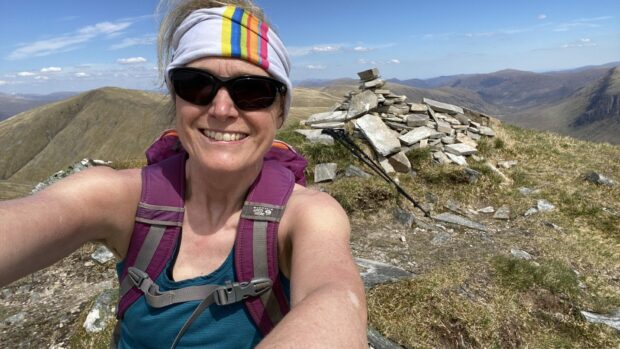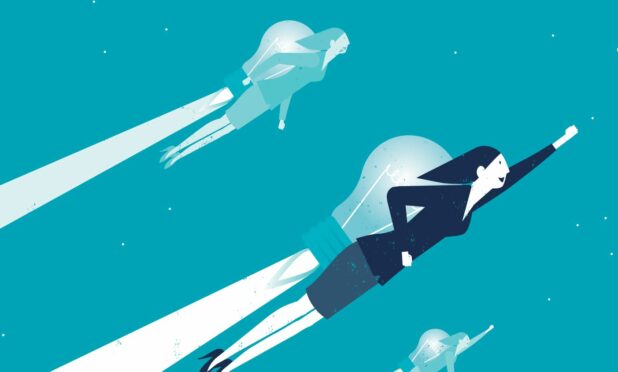
It’s all too easy to wake up feeling overwhelmed and rush into the day, pulled and pushed around by all the people, tasks and demands facing us. But you can start your day in a different way. And now is the perfect time to rethink your morning routine.
A new book, Rise And Shine: How To Transform Your Life, Morning By Morning, by brother and sister team, Kate and Toby Oliver, both therapists, aims to help.
Their S.H.I.N.E method is made up of five categories essential to developing a morning routine that will set you up for the day ahead:
S is for Silence: Bringing moments of stillness, peace and reflection into your morning helps centre and calm you for the day ahead.
H is for Happiness: Starting the day feeling positive can help you cope with any challenges you may face.
I is for Intention: When we don’t know what we want to achieve from the day, it’s easy to lose focus and end up feeling demoralised. Get clear on your intentions, so you can create your day.
N is for Nourishment: A healthy, nourishing physical and mental morning diet will reinvigorate you for the day.
E is for Exercise: Our lives are increasingly sedentary, and we need to get moving to wake up and create vitality.
Kate Oliver, a psychologist with 30 years experience, said: “All you need to get started is to find a few minutes in your morning. Decide what is realistic and helpful for you. It might simply be a case of making different choices about how you use your time on waking (for example, using the time you currently spend browsing on your phone or watching TV). Or it might mean setting your alarm a little bit earlier.”
Below are some morning routine practices from the S.H.I.N.E. programme. There are many more in the book, which offers a pick and mix approach so you can tailor your routine to suit your circumstances.
Don’t hit snooze
When your alarm sounds, try the five-second rule –count back from five to one and then get up. This countdown will help you push past feelings of hesitation and reluctance, and motivate you to get going.
Visualise
Sit somewhere comfortable, where you won’t be disturbed. Breathe slowly, softly and deeply. Visualise yourself going through your day, successfully performing all your tasks with ease, confidence and enjoyment.
Fill in as much detail as possible, using all your senses and emotions – see, hear, touch, taste, smell and feel your day unfolding. If there is a particularly daunting task ahead, visualise yourself having already done it with ease and success.
Free writing
Free writing, by hand, using paper and pen, can make a big difference to your wellbeing and mental health.
A review by the Royal College of Psychiatrists shows numerous health benefits of expressive writing. These include a stronger immune system, and reduced symptoms of a number of diseases such as asthma, arthritis, chronic pain and hypertension.
One method is Morning Pages, a practice outlined by Julia Cameron in her book The Artist’s Way.
She recommends three pages of longhand, stream-of-consciousness writing, done first thing in the morning. Think of it as clearing the decks and opening the sails before you voyage smoothly and unburdened into the day ahead.
Just start writing, there is no wrong way to do it as free writing is about expressing yourself.
Give thanks
Studies consistently show that people who are more grateful are happier, less depressed and less stressed.
They also tend to be more satisfied with their lives and relationships. In one study, people who kept a daily gratitude journal for two weeks experienced increased positive mood, greater optimism about the future, and better sleep. It also helps your heart.
Think about five things in your life you are grateful for. The key thing is that thinking about them makes you feel grateful.
You can do this as a mental exercise, counting them off on the fingers on one of your outstretched hands, almost as if you are holding these experiences in the palm of your hand, or write them down on a post-it note that you stick somewhere you can see it throughout the day.
Mirror, mirror…
Talking to yourself in the mirror is a great way to use positive affirmations to build your self-esteem and confidence.
Look beyond your external appearance. We all have a tendency to focus on what we look like – those wrinkles, our body shape or size.
Take a deep breath and say, either aloud or inwardly: “I love and accept you, just the way you are.” You may find it odd, awkward or embarrassing. Stick with it. Maintain eye contact. The more you practise, the easier it becomes.
Smile
Your body releases “happy” chemicals – such as endorphins – when you smile. You can do this in bed, as soon as you open your eyes – just gaze up at the ceiling and smile. Hold the smile until you feel your face soften and relax into it. Keep smiling until it moves from a physical facial gesture to a warm feeling inside you.
Some days, you might wake up smiling and you can simply savour the moment. On other days, it might feel like the most strenuous exercise ever – but keep smiling until you feel a change, however subtle.
You might find it helpful to keep something that makes you smile by your bed or in your bedroom so that you can look at it as soon as you wake up. This could be a photo of a loved one or a beautiful bloom.
You are what you eat
Eating breakfast boosts our mood. One study at Bristol University found people who ate breakfast had a more positive mood, performed better on a memory task and felt calmer than those who had nothing to eat. Take time to sit down and enjoy the process of eating. Try not to rush
Drinking water
A glass of water first thing (before tea or coffee) rehydrates and wakes you up, helping you function at your best. It also keeps you healthy by encouraging the production of blood cells, balancing your lymphatic system, which helps to fight infections, cleansing your body of toxins.
Set your goals
There is an extensive body of evidence to suggest that having goals helps us perform better and feel better about ourselves.
The most effective are known as S.M.A.R.T. goals – Specific, Motivating, Achievable, Relevant and Time-bound. For example, if you have decided that you will benefit from drinking more water your S.M.A.R.T. goal might be to drink six glasses a day.
Dance like no one is watching
Research undertaken by Stanford University shows that dancing gives your brain an incredible workout, improving your thinking processes and boosting your intelligence. This is because it uses lots of parts of the brain simultaneously.
So why not dance your way into your day? Just put on some fun and uplifting music and start moving along to it. Wiggle, jiggle, jump around – whatever you fancy. Give yourself permission to be free in your dancing. Dance like a child. Be silly.
Map out your day
Before checking your messages or turning on your computer, take some time and decide what will make this day successful. List the jobs/tasks that absolutely must be done today. List the people you need to contact or connect with today. List at least one thing you will do today that will make you feel happy.
If you want more help in developing ways to help you map your day and manage your time effectively, you might find it helpful to look into bullet journaling, a highly structured method of planning ahead and staying on top of daily tasks.
Extract from Rise And Shine: How To Transform Your Life, Morning By Morning by Kate Oliver and Toby Oliver, £9.99

Enjoy the convenience of having The Sunday Post delivered as a digital ePaper straight to your smartphone, tablet or computer.
Subscribe for only £5.49 a month and enjoy all the benefits of the printed paper as a digital replica.
Subscribe
